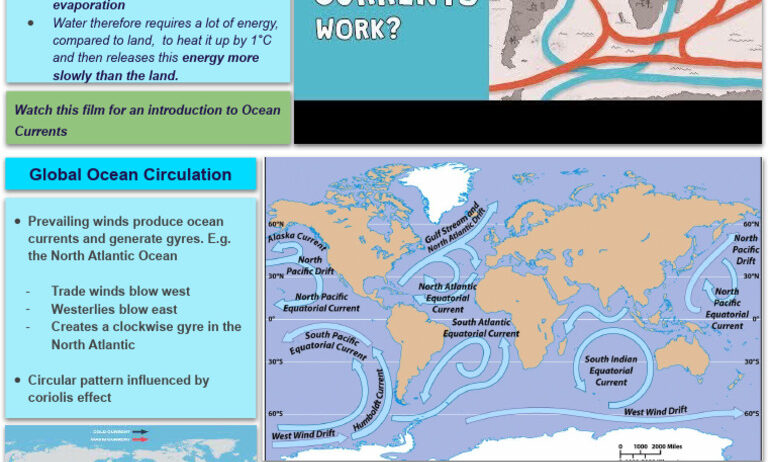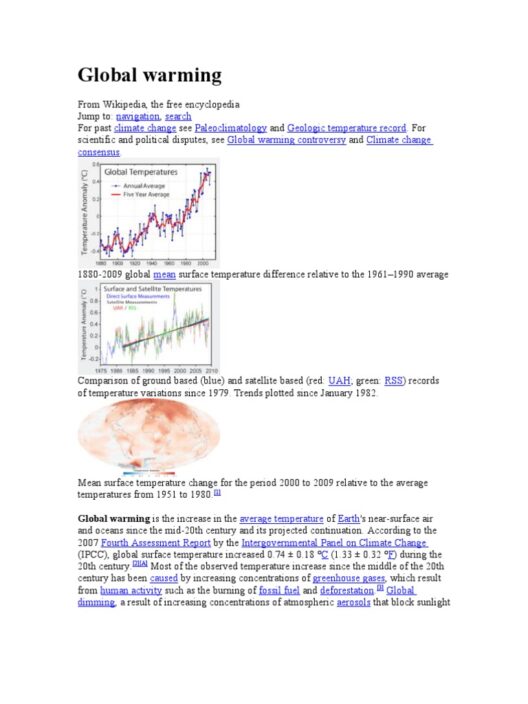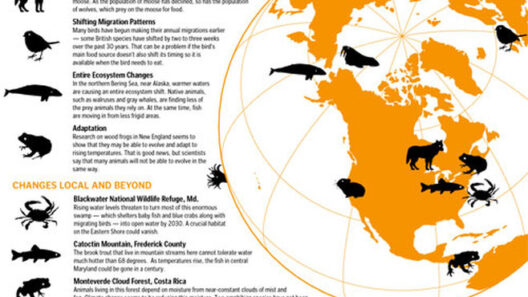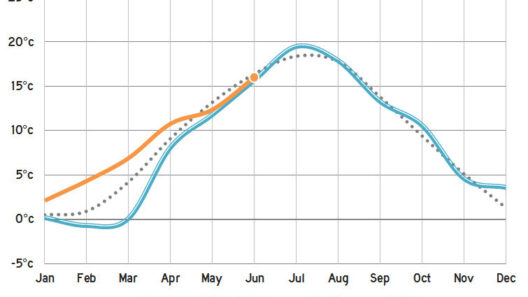Ocean currents, often perceived merely as moving bodies of water, are actually intricate systems that play a pivotal role in shaping the planet’s climate. These currents act as enormous conveyer belts, transporting heat and nutrients across the globe, thus influencing weather patterns and ecosystems. The relationship between ocean currents and climate is profound and multifaceted, leaving us with an array of questions and insights regarding our planet’s dynamic systems.
Understanding the impact of ocean currents requires delving into their mechanisms and the subsequent effects on atmospheric conditions. In essence, these currents redistribute thermal energy from the equator toward the poles while transporting cooler water from polar regions back to the equator. This balancing act is crucial for maintaining the Earth’s delicate climatic equilibrium.
From the wavy surface visible during a beach day to the self-sustaining ecosystems beneath, ocean currents hold a deeper secret that warrants exploration. Their fascinating interplay dictates not just our weather but also the health of marine life and coastal communities. The question remains: how do these unseen forces orchestrate the symphony of climate?
Analyzing regional climates unveils a clearer connection between ocean currents and temperature regulation. For example, the Gulf Stream, a powerful Atlantic current that originates in the Gulf of Mexico, carries warm water across the Atlantic Ocean toward Europe. This infusion of warmth significantly mitigates the harshness of winter temperatures in northwest Europe, creating a more temperate climate than would typically be expected at such latitudes. Without the Gulf Stream, much of Europe could experience a starkly different climate, possibly resembling that of eastern Canada, with frigid temperatures and extended winters.
Moreover, the alterations in ocean circulation patterns due to climate change have far-reaching implications. As global temperatures rise, ice caps melt, and freshwater influx into the oceans disrupts these established circulation routes. Such disruptions can lead to chaotic weather patterns, including extreme storms, prolonged droughts, and erratic rainfall, highlighting how intimately entwined ocean currents are with global climate stability.
Examining the types of ocean currents provides insights into their varying impacts on climate. Surface currents, driven predominantly by wind and influenced by the Earth’s rotation (the Coriolis effect), control the uppermost layers of the ocean and play a direct role in moderating climate. In contrast, deep-water currents, part of a larger subsurface phenomenon known as thermohaline circulation, rely on differences in water density, driven by temperature and salinity. This second, slower-moving current deep beneath the surface is critically important for nutrient cycling and oxygen distribution, supporting marine ecosystems that are foundational to the planet’s biological diversity.
As we delve further, the connection between ocean currents and climate extends to their seasonal influences as well. During El Niño and La Niña events, phenomena attributed to changes in Pacific Ocean currents, significant climatic shifts occur worldwide. El Niño, characterized by warmer ocean temperatures, has been linked to increased rainfall and flooding in some regions, while fostering droughts in others. Conversely, La Niña often leads to cooler ocean surface temperatures, promoting more stable but variable climatic conditions. These oscillations underscore how ocean currents not only reflect but actively induce climatic variability, impacting agricultural patterns, water availability, and natural disaster occurrences.
Beyond immediate weather patterns, the long-term effects of ocean currents on climate reveal key insights into global warming. By absorbing large quantities of carbon dioxide from the atmosphere, oceans act as a buffer against climate change. However, as oceans warm, their ability to sequester carbon diminishes, exacerbating greenhouse gas concentrations and accelerating global warming. This troubling feedback loop emphasizes the crucial nature of maintaining healthy ocean systems, as their deterioration could catalyze catastrophic shifts in climate.
The intricate dance between ocean currents and climate is not merely a point of academic interest; it has tangible implications for humanity and the environment. Coastal communities are particularly vulnerable, as rising sea levels and altered ecosystems threaten their livelihoods and safety. Furthermore, the fishing industries that rely on nutrient-rich waters may also face downturns due to shifting currents. Understanding these nuances invites a robust conversation about sustainable practices and proactive measures to safeguard our oceans.
Our fascination with the oceans— their depths, their vastness, their mysteries— is matched only by the complexity of the currents that flow through them. These unyielding currents mold our planet’s climate and by extension, determine our way of life. It is imperative that we, as global citizens, recognize this intimate relationship and advocate for the preservation of our oceans. Awareness and action are crucial if we are to mitigate the adverse impacts of climate change and cherish the invaluable marine ecosystems that sustain us. Only through a concerted effort can we hope to unravel the intricate threads of the climate tapestry interwoven with the currents of our oceans.








